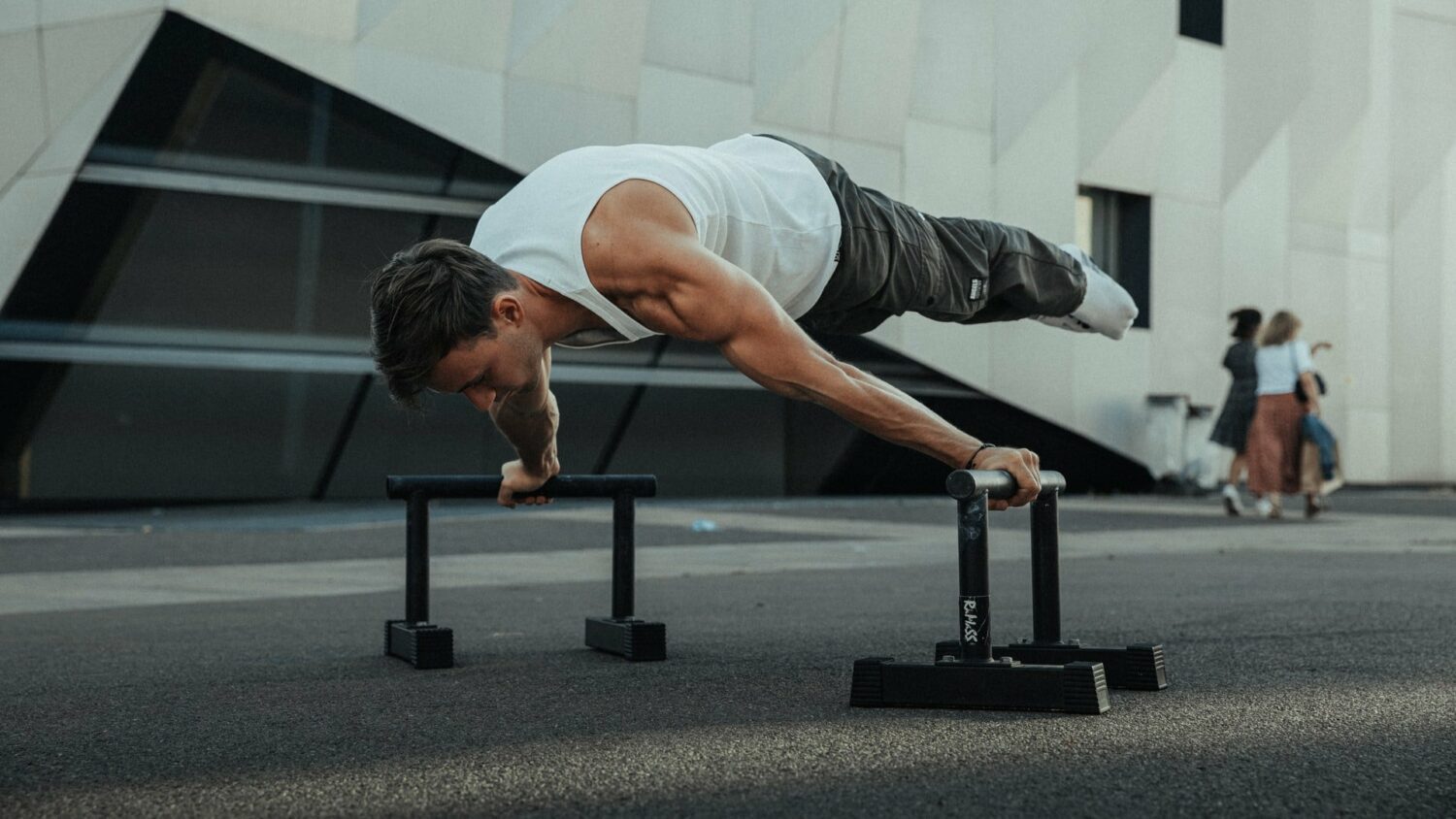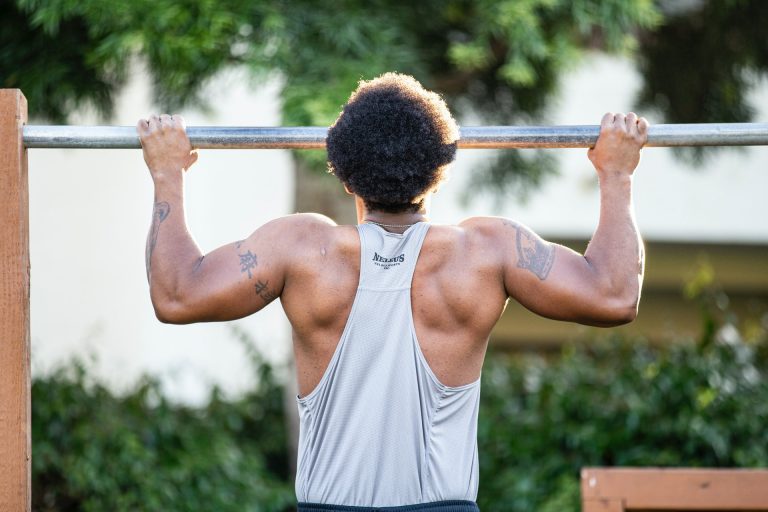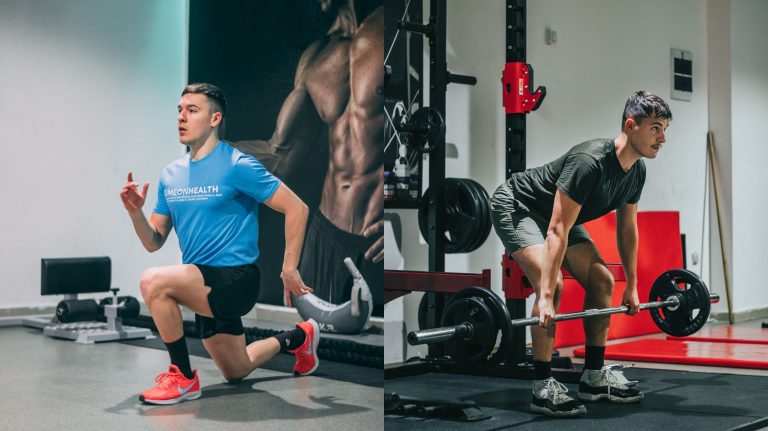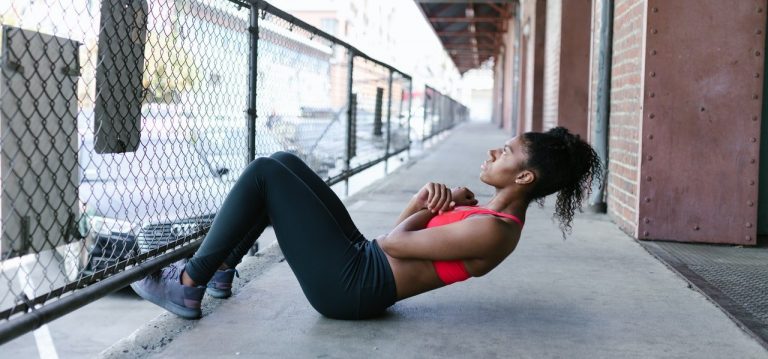Top 4 Calisthenics Tips To Improve Performance
If you’re looking to improve your calisthenics performance and consequentially get better results from your training, these calisthenics tips can help you. We will look at different hacks, tools, and tips that can help you get those gains the right way. Don’t think it will be easy though.
Quick-Fix vs. Tips
The first important thing is, these aren’t quick fixes, but they can definitely lighten up your workouts, and make things easier and smoother. If you progress in any of these 4, you can have better results overall.
At first, you might think grip strength and core stabilization are boring, but believe it or not, it makes a tremendous difference in the number of reps you can do on a pull-up bar. We don’t believe in a long-lasting change with a quick fix, but focusing on these fundamentals is crucial for progress.
If you’re into calisthenics, feel free to check out our calisthenics 101 guide, the famous weightlifting vs. calisthenics comparison, and calisthenics effects on core strength and stability.
Whole-Body Experience
It might sound a bit meditative, but calisthenics is a whole-body experience. You need to be aware of your body and see it as a whole. This isn’t isolation weightlifting where you do a bicep curl with a dumbbell, this activates your whole body.
Calisthenics is great for overall stability, full-body strength, and functionality, but it is way harder to train that way. This is why some bodybuilders, although they look very massive and strong, can’t do a human flag, muscle up, or front lever which is easy for calisthenics professionals. To conclude, body awareness and stability are important.
The Top 4 Calisthenics Tips
Ranging from muscle coactivation to specific muscle conditioning, calisthenics has a lot of little hacks to be incorporated. For optimal progress in performance, you need to be specific about what your goals are.
For hypertrophy, you’ll need higher volume, frequency, moderate loads, and 6-12 reps, while for the strength you would ideally reduce the volume, and do only 3-5 reps per set with higher load (added weight). The goal is to improve the overall calisthenics performance, meaning we should be able to do more reps with the correct form, or the same amount of reps with higher loads.
These tips are very general, meaning they aren’t specifically designed for a certain type of conditioning. They’ll improve muscle endurance, stability, intermuscular coordination, posture and exercise form, strength, etc.
#1 Core Activation
Whether you’re doing the pull-up, push-up, or side plank, each one requires high core activation. Activating your core muscles, so abdominals, lower back, and side obliques can significantly improve your performance in many compound exercises.
To prove this, try doing a pull-up with your legs straight and a tight core. As you keep on doing it, you’ll see how easier it is to pull your body weight when your core is indulged. When you tighten your core, your upper back doesn’t have to drag your lower body up, but your whole body is in sync.
It isn’t a secret, even in the world of science, that core stability and strength are related to higher performance. Core training has also been called “the centerpiece of any training program” for a reason. (1) From neutral spine maintenance to movement control and intraabdominal pressure, core strength is crucial.
We activate and partially train the core with most compound exercises, but is it enough? Research shows that targeted and specific core stability training provides significant effects on core strength. (2) This means doing squats and pull-ups will affect core strength with proper activation, but for a stronger core, it is essential to do core-targeted training.
key point
Our core is the bridge between the upper and lower body. In anything we do, we need to keep the spine fairly neutral. For this to be achieved, we need a stronger core. Otherwise, the risk of injury can increase, and we can lose some of that speed, control, and functional strength without proper core activation.
#2 Grip strength
It turns out that improving grip strength won’t improve just your pull-up results. Grip strength is a great biomarker for health and longevity too. It is a good predictor of other health biomarkers like bone density, fracture and fall risk, strength, cognition, sleep, mortality, and more. (3)
Stable wrists and strong wrist muscles are a must for all the pushing and pulling motions we do in our strength training routine. Having weak wrists will result in immediate aches that prevent the individual to train consistently. One of the best ways to increase strength, is by improving grip strength first.
Research even shows that grip strength is related to muscle strength. This cross-sectional study on children, adolescents, and young adults shows that grip strength is a great indicator of total muscular strength. (4)
Anytime you push or pull something it goes through the wrists, which physically, have the smallest circumference and can be thought of as the weakest point in the chain. With weak wrists, you can’t progress much because it can cause micro-fractures and inflammation that need longer periods to recover. A good tip would be to increase grip strength, but how do you do that?
Pro Tip
To increase grip strength, you should start exercising your hands first. This is best done by squishing a hardball, exercising your extensors, and doing a fixed hand-grip exercise. Pull-ups and Farmers Walk can also help, but try to squeeze the bar or dumbbells as hard as you can.
Bonus Tip: How To Manipulate Grip in Calisthenics
How you grip the bar will make a significant difference in muscle activation. With a supine grip, you do chin-ups that predominantly target your biceps. With a pronated or overhand grip, you target the upper back muscles more.
Research shows that doing pull-ups on rotating handles will result in greater latissimus dorsi activation. Also, the pronated grip tends to do the same on Lat Pull-Down exercise without a difference between the width of the grip. (5)
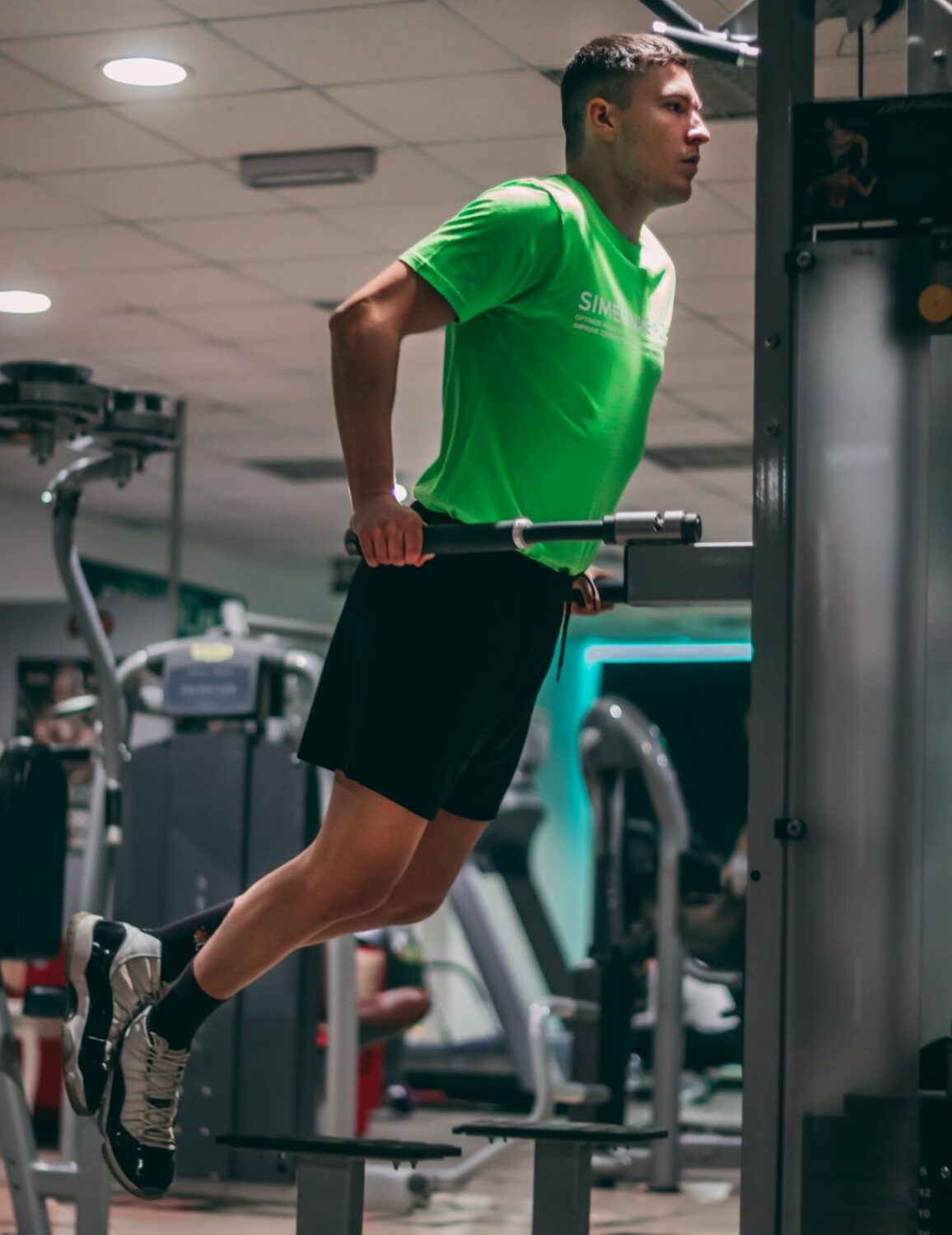
#3 Master the Basics
Training on bars incorporates multiple compound exercises. These will engage higher muscle mass, from larger to smaller, and deeper muscle groups.
For example, you may think that doing pull-ups will target your lats only, while in fact, pull-ups hit your core, rear shoulders, wrist muscles, lower back, and biceps – plus it engages lots of deeper and smaller back muscles too.
When you see someone doing a front lever, or a muscle up, it is not just done by reps but also synchronization. To properly synchronize your muscles and activate them at the proper time, you need to master the basics.
The four basic calisthenic exercises are squats, push-ups, dips, and pull-ups. Mastering those at first will give your body the needed conditioning to then go on to tougher versions of each. But what does mastering the basics really mean?
key point
Mastering the basics means being able to do those 4 exercises with proper form, muscular activation, and consciously engaging and synchronizing the right muscles
Pull-Ups
Push-Ups
Squats
Dips
Although there are different grips, the basic pull-up uses the overhand or pronated grip. You should be able to lift your body weight up with already retracted scapulae before starting. This is crucial. You shouldn’t move your legs to gain momentum, nor let your weight fall on the way down. A good pull-up is done in a controlled manner with high upper back, bicep, and core activation. With a properly stabilized body, synchronized movement, and slower eccentric movement. The chin should be over the bar height level.
Many people do push-ups either with a short range of motion, or flexed neck. Setting the hands slightly wider than shoulder-width, we should be able to slowly lower our bodies and push back up. Without lifting the right or left side faster, completely balanced and strong. The core should be tight and activated, the push is done through the triceps, front shoulder, and chest muscles. Hips don’t fall up or down, but we draw a line as with plank. Exhale on the way up, the neck is in an extension of the spine.
Squats are one of the most functional, full-body exercises. Before progressing onto weights, we should aim at proper bodyweight squats. Feet are slightly wider than the hips, toes slightly outwards. Squatting down, we should be able to push the knees in the direction of our toes, not outside or inside. Buttocks go down, we keep a neutral spine and tight core. On our way up, we activate the quadriceps, hamstrings, core, and glutes mainly, extending in an upward standing position.
Dips can be quite complex. For anyone with shoulder problems or imbalances, it is crucial to improve shoulder mobility and aim for fewer reps and no load (or assisted lifts). The dip incorporates push muscles mainly, such as the chest, triceps, and front shoulders, but also engages the core. We should also aim for balanced lifts and controlled and slow eccentric body-lowering. Imbalances can easily cause shoulder or elbow pain, so progressions should go slower.
key point
Mastering the basics will enable the individual to activate the specific muscles properly and in a synchronized manner, to pull off the correct movement. If you’re still not sure why this is important, let’s go to the next section.
#4 Smart Progression
Consistent exercise brings forth change because it stimulates the muscle to grow and adapt. The more complex your movements and the more variations you include, the more functional your muscles become.
Progress can be measured in three ways:
- being able to do the harder variation of an exercise
- being able to do more reps with a correct form, per specific exercise
- being able to lift more load on a specific exercise
Anyone that has a structured calisthenics program aims at some specific goal. Maybe that’s to become stronger, increase muscle mass, or overall body control and stability. However, without smart progressions, we won’t go far but stumble back into a plateau.
What is a progression in calisthenics? Well, let’s say you can do a maximum of 11 pull-ups, correctly. You train for 2 months more, and nothing seems to beat your 11 reps record. This is called “hitting a plateau”. To further improve your number, or get to a harder pull-up variation you need to include some variation.
Variations are powerful because they stimulate the muscle from a different angle, in a different way. They also engage deeper muscles, improving stability. With consistency, we can also learn how to synchronize our muscles, aka learn better intermuscular coordination that results in more efficient muscle coactivation.
Progressions work by either stimulating anatomical changes, neural adaptation, or learning proper coordination. Incorporating variety and compound movements are the key.
Here are a couple of progressions for different exercises, listed from the easiest to the hardest.
key point
Adding more weight, doing more reps, or doing slower reps of a specific exercise is always making the exercise harder. In many cases, this can be enough to stimulate change without the need of introducing many different exercises.
Pull Motion
Push Motion
Legs Exercises
Core Exercises
#1 Scapular Retractions, Bar-Holds Inverted Row Horizontal Pull-Up, Negatives Pull-Up (just eccentric), Resistance Band Assisted Pull-Ups, Parallettes Pull-Up, and TRX Row
#2 Regular Pull-Ups, L-Pull Up, Chest to Bar Pull-Ups, Close and Wide Grip Pull-Ups, and Pull-Up Holds.
#3 Weighted Pull-Ups, Ring Muscle Ups, Close Grip Chest-To-Bar Pull-Ups, Slow Pull-ups, Muscle Ups, and One-Hand Pull-Ups
#1 Wall Push-Up, Push-Up Negatives (just eccentric), Kneeling Push-up, Close and Wide Grip Incline Push-up, or Incline and Kneeling and Pike Push-Up
#2 Triceps Push-Up, Wide Grip Push-Ups, Regular Push-Up, Dips, Bar Pike Push-Up, and Decline Push-Up
#3 Weighted Dips, Resistance Bands Close-Grip Push-Ups, Weighted Push-Ups, Weighted Decline Push-Ups, Handstand Push-Ups, and One-Hand Push-Ups
#1 Box Squat, Half Squat, Wall Isometric Squat Hold, and Standing Crab Walk
#2 Standard Squat, Resistance Bands Crab Walk (hip abduction), Squat-Pulse-Jump, Close to Wide Stance Squats, and Archer Squats
#3 Romanian Deadlift, Squat variations with Weights, Farmers Walk, One-Legged Dumbbell Deadlift, Box Jumps, Kettlebell Lunges, Goblet Squat, Bulgarian Split Squat, Pistol Squats, and Wall Isometric Plate Squats
#1 Crunches, Plank, Knee Tucks, Dead Bug Anti-Rotation, and Side Crunches
#2 Plank, Leg Raises, Abs Roll-Out, Kettlebell Dead Bug, V-ups, Side Plank, Crunch Kicks, Knee-To-Elbow, Side Crunches
#3 L-Sit, Weighted Plank, Human Flag, Turkish GetUp, Front Lever, Hanging Leg Raises, and Decline Plank
Research Limitations
*Studies have some limitations, important to evaluate the validity of their results. Here’s a highlight of some and NOT ALL studies (and limitation), shown in this article, for context.
- Aged data or data older than 10 years *2005, 201.
- Lack of randomization and relatively small sample size *n(6), n(10).
- Difficult to isolate core strength as one component and measure how it relates to specific athletic performance.
- Specific population studies *Dutch children, young adults and adolescents.
- Narrative review rather than systematic review *not so comprehensive.
conclusion
There are no quick tips that will make you a pro-level calisthenic athlete overnight. However, a few tips like improving grip strength, full-body awareness, core engagement, smart progressions, and mastering the basics can lead to significant results faster, and more effective.
Frequently Asked Questions
How important is grip strength in calisthenics?
Grip strength is crucial in both strength training and calisthenics. The stronger our wrist muscles and our grip, the more force we can transfer throughout our bodies. With weak wrist, the linking point is weak, which may result in injury or decrease performance/strength.
What are progressive exercises or progressions?
Progressions are harder variations of a specific exercise. They are meant to challenge our current strength and stability, and with enough training we can progress through, to another harder variation. Progressive exercise can be harder variations of a given exercise (position-wise), or they can add weights, or require more balance that makes the exercise harder to perform.
Is core activation important in calisthenics?
Core activation is another crucial part of bodyweight and weight training in general. With a weak core, it is hard to keep our spine neutral and increase intra abdominal pressure (IAP) which is important to reduce the gravitational forces on the spine. The core is a key component of a strong body, it is where the strongest bridge/connection of lower and upper limbs goes through. It helps us to stop, speed up, change direction, balance our body and exert force.
What are the best tips to improve calisthenic performance?
The best tips to improve calisthenics performance and strength include: mastering the basics, increasing grip strength, learning proper core activation and using smart progressions (variations).
What are the 4 basic calisthenics exercises?
The four basic calisthenic exercises are: pull-ups, dips, squats and push-ups.

